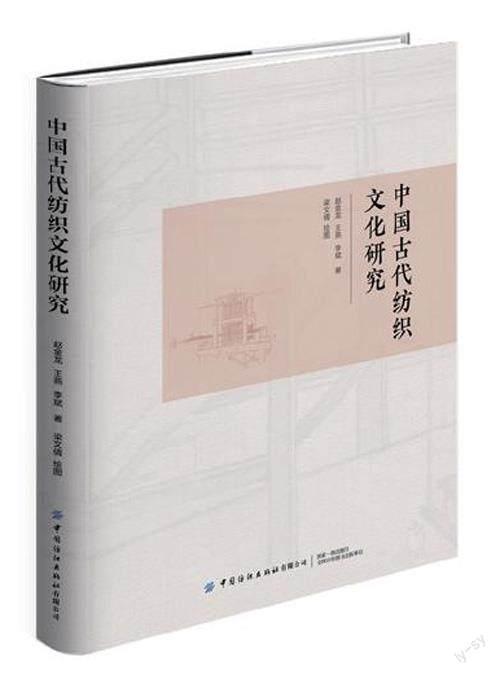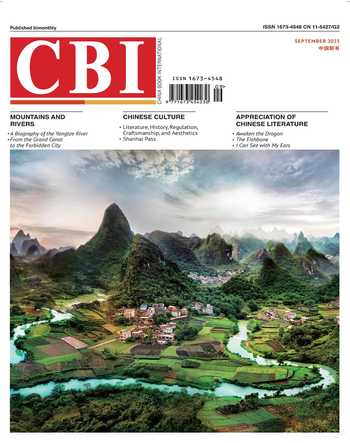Ancient Chinese Textile Culture Research



Zhao Jinlong
Zhao Jinlong is the deputy director of the Hubei Intangible Culture Research Center (Wuhan Textile University).
Wang Yan
Wang Yan received a Ph.D. in the College of Humanities, Donghua University, and is also an assistant researcher at the Hubei Master Teacher Studio of Wuhan Textile University.
Li Bin
Li Bin is an associate professor at the School of Fashion of Wuhan Textile University.
This book illustrates the relationship between textiles and ancient Chinese culture, highlighting the splendor of ancient Chinese textile culture. It is divided into four chapters and fifteen sections, and can be summarized into four parts: “Textiles in Ancient Words,” “Textiles in Ancient Texts,” “Textile Technology in Ancient Images,” and “Textiles in Words.”
Ancient Chinese Textile Culture Research
Zhao Jinlong, Wang Yan, Li Bin
China Textile & Apparel Press
November 2022
158.00 (CNY)
This book studies the two-way relationship between ancient Chinese culture and textiles. On the one hand, we try to interpret textile technology and culture from words, idioms, ancient texts, and ancient image information. On the other hand, we try to interpret ancient Chinese textiles culture with references to field archaeology, historical documents, folklore surveys, and illustrations from the word patterns in textiles.
Textiles in Ancient Words
There are still many symbols and words about textile information in oracle bones that have not been deciphered, mainly because of two reasons: (1) we cannot find connecting points in the genealogy of oracle bones-Jinwen-Seal script changes; (2) there are no ancient dictionaries such as Shuowen Jiezi for reference. Therefore, we have to find another way to conduct in-depth research because the number of characters preserved in the change of scripts is small. How to analyze and understand these original texts that have yet to be deciphered becomes the focus of our following research. First, we should re-examine the textile oracle bones that have been successfully deciphered and conduct multiple examinations of the textile symbolic information in them, avoiding the interpretation of isolated evidence, which is the basis of successful understanding of the textile oracle bones that have not yet been deciphered. Secondly, based on the textile technology, textile culture, and religion of the Shang Dynasty, as well as the credible textile symbolic information in the oracle bones, the undeciphered textile oracle bones are analyzed, and their meaning is deciphered. It is optional to correspond to modern texts word by word.
Textiles in Ancient Texts
The ancient textile technology in China is condensed with the wisdom and sweat of the ancient ancestors, and its development and innovation are driven by silk weaving technology and textile aristocracy. However, the silk and cotton textile industry would not have developed rapidly without plant fiber textile technology. The core process of fiber-planting is mainly degumming, spinning, and weaving. The natural conditions in the northwestern part of China determine its production and lifestyle, and leather and wool fabrics have a wide range of uses in residents daily lives. By compiling information about leather and wool in textile and clothing from the Shuowen Jiezi, we know about the development of the fur and leather industry in the Eastern Han Dynasty, which is also crucial for scholars to study ancient clothing materials. The section on silk fibers records every part, state, and characteristic of silk in writing. For example, there are five characters for the word “slender,” and each of the different threads has its own “number,” thus reflecting the fact that the ancients had developed many practical specifications, standards, and sophisticated techniques. Through the compilation of silk fiber material characteristics and the silk fiber material, we can find that the ancient people attached great importance to the silk weaving industry, reflecting that the ancient people gradually had a more comprehensive understanding. The concept of silk weaving was gradually developed. It is clear that the silk weaving skills of the ancients were very advanced and rigorous from many perspectives, and the development of the silk weaving industry in the Eastern Han Dynasty is also evident. The silk weaving industry in the Han Dynasty was well-developed and had a wide range of influence.
Textile Technology in Ancient Images
Ancient images include frescoes, silk paintings, portrait stones, bricks, prints, etc. Ancient Chinese image information history is the history of Chinese textile technology. However, the academic community doesnt need to select the textile technology information. Academics do not have the required screening of the selection of textile technology information, which sometimes leads to distortion in writing history. This article takes the image information of textile technology in ancient China as a research object and adopts the methods of field archaeology, historical documents, and folklore survey; this article uses the methods of field archaeology, historical documents, and folklore surveys to organize and study the ancient Chinese spinning and weaving techniques. The purpose of this article is to compile and analyze as systematically as possible the spinning and weaving techniques in ancient China, with the aim of presenting a more objective picture of the history of textile technology in ancient China.
The variations of ancient Chinese looms are: primitive waist looms, double shaft looms, heddle looms, small flower-building jacquard looms, and large flower-building jacquard looms.
The development of ancient Chinese looms does not follow a linear relationship, as the looms of the Western Han period were of a higher level than all subsequent looms except the flower-building jacquard loom, yet they appeared earlier. It seems very strange. The author explains this phenomenon: the development of Chinese looms went along two paths in development: one is the aristocratic path, where the fabric is mainly jacquard-based; the other is the civilian path, the fabric is mainly plain. Coupled with the fact that ancient textile technology, especially jacquard technology, was monopolistic and territorial, the existing typological archaeological ranking of ancient Chinese looms is relatively easy to explain. It is because the monopoly of the highest jacquard technology before the Ming Dynasty was firmly in the hands of the officials, and the weaving technology mastered by the private sector was very crude. Judging from the looms excavated in Lao Guan Shan, people during the Western Han Dynasty should have mastered the production of multi-instrument and multi-tip looms in addition to the jacquard looms of the Flower House. The large number of excavations of five-color warp brocades also confirms that the development of Chinese looms was constrained by Chinese religious traditions. The warp and weft, the earth following the sky, and the five colors represent the five elements — gold, wood, water, fire, and earth. With the rebellion of the Five Hu and the confrontation between the Northern and Southern Dynasties, the traditional Chinese religious system was transformed, and western weft brocade was introduced and became popular, leading to the emergence of small flower looms in China in the Tang Dynasty. With the extravagance of the ruling class, large flower looms emerged in the Ming Dynasty.
Textiles in Words
Although ancient Chinese textiles are handicrafts with some use value, the textile patterns give them artistic and cultural qualities. The designs involving characters in ancient China includes the relevant characters in ancient script brocades and other works.
The development of ancient Chinese inscription brocade is subdivided into three stages: inscription brocade in the Han and Jin dynasties, inscription brocade from the Northern and Southern Dynasties to the Sui and Tang dynasties, and inscription brocade after the Tang Dynasty. The inscription brocade of the Han and Jin dynasties reflects the ideals and pursuits of the people at that time by inserting auspicious words into abstract patterns and designs. It also reflects the customs, social psychology, artistic style, and the development level of weaving technology during the Han and Jin dynasties. The period from the Northern and Southern Dynasties to the Sui and Tang dynasties was vital in developing ancient Chinese text brocade. During the Northern and Southern Dynasties, Western Asian patterns (joint beads, rolled grass, pairs of birds, pairs of animals, and other patterns) were introduced to the people. They became rapidly popular in Chinese society at that time. During the Sui and Tang dynasties, the traditional Chinese brocade weaving technology of warp thread was gradually replaced by the foreign technology of weft thread brocade weaving. The patterns became more and more realistic and vivid. Using words to express the pursuit of happiness was no longer necessary, as in the Han and Jin dynasties. “happiness” and “auspicious” were gradually changed. After the Tang Dynasty, the text brocade continued to develop in the direction of the Tang Dynasty, and the role of text decoration became increasingly important.
In the Ming and Qing dynasties, with the popularity of auspicious patterns, the brocade was developed in this direction.

